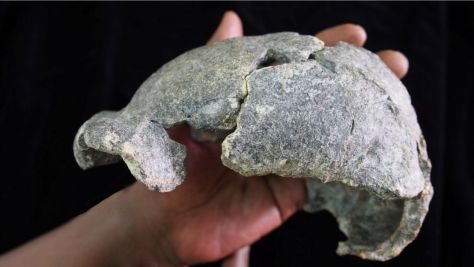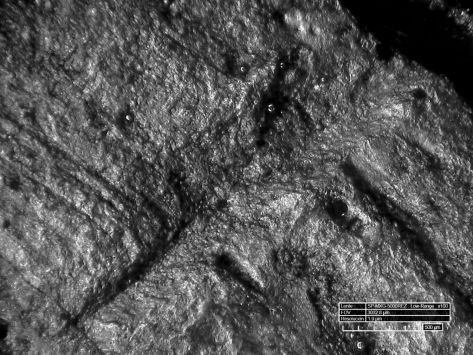NewsNext Previous
IPHES and URV participate in the study of two new skulls of Homo erectus up to 1.5 million-years-old
The skulls were presented today in the Science Advances journal
These new skulls were found at Gona, in the Afar Triangle of Ethiopia, close to the area where “Lucy” was discovered
The researcher Isabel Cáceres analyzed the fossil remains found next to these skulls and confirmed mammal exploitation by these hominins
The association of Oldowan and Acheulian tools with these crania endorses a cultural and behavioral complexity of this species that has yet to be fully understood

Two new skulls of Homo erectus found at Gona (Ethiopia) were published today in the Science Advances journal by an international team led by Sileshi Semaw, researcher at CENIEH (Centro Nacional de Investigación sobre la Evolución Humana) (Burgos, Spain) and Michael Rogers at Southern Connecticut State University (SCSU) (USA), where Dr. Isabel Caceres, researcher from the Universitat Rovira i Virgili (URV) and the Catalan Institute of Human Paleoecology and Social Evolution (IPHES) (Tarragona, Catalonia), participates since 2013. Gona is located in the Afar Triangle that is beside to the well-known study areas of Middle Awash and Hadar, where the famous skeletons “Ardi” and “Lucy” were found, respectively.
One of these skulls is a nearly-complete hominin cranium estimated to ~1.5 million years (Ma) ago and was discovered at the site of Dana Aoule North (DAN5). The other one is a partial cranium dated to ~1.26 Ma ago and was recovered from the Busidima North site (BSN12).

DAN5 cranium has the smallest endocranial volume documented for H. erectus in Africa, about 590 cubic centimeters. This skull is gracile and bears some similarities with the small individuals discovered at Dmanisi (Georgia). The BSN12 partial cranium is robust and large (800-900 cc.) similar to OH9 individual from Olduvai Gorge. The small size of the DAN5 cranium suggests that it could belong to a female individual and, therefore, that H. erectus was probably a sexually dimorphic species.

Both crania were associated with simple Oldowan-type (Mode 1) and more complex Acheulian (Mode 2) stone tool assemblages. Thus, instead of finding only the expected large handaxes or picks (tools typically associated with H. erectus), the Gona team found both well-made handaxes and plenty of less-complex Oldowan tools and cores. This suggests that Homo erectus had a degree of cultural/behavioral plasticity that has yet to be fully understood.

The hominins at both sites lived close to ancient rivers, in an environment with riverine woodlands adjacent to open habitats. The low δ13C isotope value from the DAN5 cranium (from the right molar) is consistent with a diet dominated by C3 plants (trees and shrubs, and/or animals that ate these plants) or, alternatively, by broad spectrum omnivore.
Isabel Cáceres studied the taphonomy of the faunal remains from the deposits where the two skulls were found, that is, the study of bone surface modifications the fossils present. While in BSN12 no anthropic evidences were identified, in DAN5 the use of stone tools was evident in defleshing and marrow consumption activities in animals of different size. This implies that H. erectus butchered large, medium and small mammals, although it has not been established whether these were obtained by hunting.

In conclusion, DAN5 and BSN12 sites at Gona are among the earliest examples of H. erectus associated with Oldowan and Acheulian stone tool assemblages. The investigations carried out at Gona have clearly shown that Oldowan technology persisted much longer after the invention of the Acheulian. This is an indicative of a particular behavioral flexibility and cultural complexity of H. erectus.

